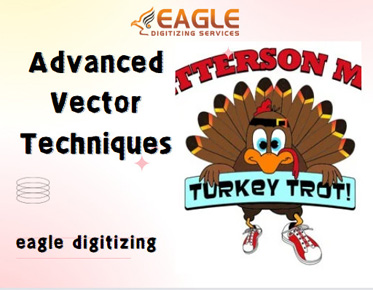Common Vector File Formats And When To Reach Out For Them
In the vast
expanse of digital design, vector graphics stand as a cornerstone for creativity
and precision. Unlike their raster counterparts, vector graphics are
constructed using mathematical equations, allowing for infinite scalability
without loss of quality. Whether you’re designing a logo, creating illustrations,
or working on complex technical drawings, understanding vector graphics is
essential.
Why File Formats Matter: Choosing the Right One for Your Needs
The choice of
file format can significantly influence the final output of your design. Each
vector file format comes with its unique properties and capabilities, tailored
for different applications. Selecting the appropriate format for your project
ensures that your graphics retain their intended quality and functionality
across various platforms and devices. With the right knowledge, you can
navigate this intricate landscape and make informed decisions that elevate your
designs.
SVG (Scalable Vector Graphics)
What
is SVG? A Detailed Explanation
SVG, or Scalable
Vector Graphics, is an XML-based vector file format that excels in creating
two-dimensional graphics. Because it’s resolution-independent, SVG files can be
scaled to any size without losing clarity. This versatility makes SVG ideal for
responsive web design, where images need to adapt seamlessly to various screen
sizes.
When
to Use SVG: Best Practices and Applications
SVG is
particularly useful for web graphics, icons, and logos, where clarity at any
size is paramount. It is also great for animations and interactive graphics due
to its compatibility with CSS and JavaScript. Best practices include optimizing
your SVG files to reduce load times, and ensuring that they are lightweight yet
visually appealing.
Advantages
of SVG: Scalability and Accessibility
SVG's scalability
is one of its best qualities. This allows designers to create graphics that
look sharp on any device, from small smartphones to large desktop monitors.
Additionally, SVGs are accessible; they can be indexed by search engines,
improving visibility and SEO. Their text-based nature means they can also be
edited in any text editor, making them incredibly versatile for developers.
AI (Adobe Illustrator File)
The
Ins and Outs of AI Files: What You Need to Know
AI files are
native to Adobe Illustrator and are designed for creatinghigh-quality vector graphics. They retain layers, effects, and other
features, allowing for intricate designs that can be edited at any time. While
AI files are powerful, they are proprietary, which means they may not be
compatible with all design software.
Best
Scenarios for Using AI: Why Designers Love It
Designers adore
AI files for their rich feature set, which supports complex vector artwork.
They are particularly well-suited for branding, print design, and illustration
projects where precision and detail are critical. The ability to easily
manipulate paths, colors, and effects makes AI a favorite among professionals
in the industry.
Compatibility
Issues: When to Worry About AI Files
While AI files
are powerful, compatibility can be a concern. Not all graphic design software
can open AI files, leading to potential issues when collaborating with others
who use different tools. It’s important to check compatibility before sharing
files to avoid workflow disruptions.
EPS (Encapsulated PostScript)
Defining
EPS: A Versatile Vector Format
EPS, or
Encapsulated PostScript, is a vector file format that serves as a bridge
between different design applications. Its versatility allows it to be used in
both print and digital mediums. EPS files can include both vector and bitmap
graphics, providing flexibility in design.
When
to Choose EPS: Key Applications in Print and Design
EPS files shine
in print design, particularly for high-quality images and illustrations. They
are widely used in the publishing industry for magazines, brochures, and
business cards. When you need to ensure that your graphics retain their quality
during scaling and printing, EPS is often the go-to choice.
Pros
and Cons of Using EPS Files
EPS files offer
several advantages, including broad compatibility across different design
software and the ability to preserve high-quality graphics. However, they can
be larger compared to other formats, which may affect load times. Additionally,
not all software fully supports EPS features, potentially limiting editing
options.
PDF (Portable Document Format)
Understanding
PDFs: More Than Just a Document Format
While PDFs are
commonly associated with document sharing, they can also encapsulate vector
graphics, making them a valuable tool for designers. A PDF file can include
text, images, and vector graphics, allowing for comprehensive design
presentations.
How
to Use PDF for Vector Graphics: Benefits and Limitations
Using PDFs for
vector graphics offers the benefit of consistent formatting across devices.
They are perfect for sharing designs with clients and collaborators without
worrying about font or layout discrepancies. However, PDFs can be less flexible
for editing compared to native design files. Once a PDF is created, editing its
vector components may require specialized software.
Scenarios
Where PDF Shines in Vector Work
PDFs are
particularly useful for final presentations, print-ready files, and sharing
design proofs. When working with clients or teams, PDFs allow for easy
distribution and can be viewed without specific software. They also support
annotations, making feedback a breeze.
DXF (Drawing Exchange Format)
What
is DXF? A Closer Look at This Technical Format
DXF, or Drawing
Exchange Format, is a CAD (Computer-Aided Design) data file format that allows
for interoperability between different CAD applications. It enables the
exchange of 2D and 3D drawings, making it
indispensable for technical and architectural design.
Ideal
Uses for DXF: CAD Applications and Beyond
DXF files are
ideal for architects, engineers, and industrial designers who require precise
drawings. They are often used in manufacturing and machining processes, where
accuracy is paramount. DXF is also popular in laser cutting and CNC machining,
where detailed designs are crucial for production.
Compatibility
with Software: How DXF Fits In
One of DXF's
strengths is its compatibility with a wide range of CAD software, including
AutoCAD and SolidWorks. This makes it easy to share files across different
platforms, ensuring that your designs are accessible to all stakeholders
involved in a project.
WMF (Windows Metafile)
Exploring
WMF: A Format for Windows Users
WMF, or Windows
Metafile, is a graphics file format native to the Windows operating system. It
is designed to store a mixture of vector and bitmap images and can be used for
both screen and print applications.
Best
Uses for WMF Files: When to Leverage This Format
WMF files are
particularly useful for Microsoft Office applications, where users can easily
integrate graphics into documents and presentations. They are also suitable for
web graphics, but their use has diminished in favor of more modern formats like
SVG.
Limitations
of WMF: What to Watch Out For
While WMF files
are convenient for Windows users, they are not as widely supported by design
software as other formats. This can lead to compatibility issues when sharing
files with users on different platforms. Additionally, WMF files may not
maintain the same level of detail as other vector formats, which can impact
design quality.
Other Notable Vector File Formats
CDR
(CorelDRAW File): A Quick Overview
CDR files are the
native format for CorelDRAW, a popular graphic design software. CDR files are
versatile and can include a wide range of design elements, making them ideal
for professional designers who work with Corel’s suite of tools.
Sketch
Files: The Popular Choice for UI/UX Designers
Sketch files have
gained popularity among UI and UX designers for their ease of use and
collaboration features. These files support vector graphics, allowing for
precise design work tailored for digital interfaces.
PDF/X:
Special Considerations for Print Design
PDF/X is a subset
of PDF specifically designed for print production. It includes features that
ensure reliable output across various printers and settings, making it an
excellent choice for designers focused on delivering high-quality printed
materials.
Comparing Vector Formats: A Side-by-Side Analysis
Key
Features: How Each Format Stacks Up
When comparing
vector file formats, it’s crucial to consider key features such as scalability,
compatibility, and ease of use. Each format offers unique strengths and
weaknesses that cater to different design needs.
Compatibility
with Design Software: What You Should Know
Not all vector
file formats are created equal when it comes to compatibility. While formats
like SVG and PDF enjoy broad support across various design applications,
proprietary formats like AI and CDR may present challenges when sharing files
with non-users of specific software.
Quality
and Performance: Which Formats Deliver the Best Results?
In terms of
quality, formats like AI and EPS often deliver superior results due to their
high fidelity. However, for web applications, SVG remains unparalleled,
offering both quality and performance. Understanding these nuances helps in
making informed choices.
Choosing the Right Vector Format for Your Project
Factors
to Consider: Purpose, Software, and Output
When selecting a
vector file format, consider the purpose of your project, the design software
you’re using, and the final output requirements. Understanding how these
factors interplay will guide you toward the most suitable format for your
needs.
Tips
for Beginners: Making Sense of Vector Formats
For those new to
vector graphics, start by familiarizing yourself with the most common formats.
Experiment with different file types to see how they impact your designs. With
practice, you’ll develop an intuition for choosing the right format in various
situations.
Avoiding
Common Pitfalls: What Not to Do
One of the most
common pitfalls is selecting a format without considering its intended use.
Avoid using proprietary formats unless you’re certain that your collaborators
use the same software. Additionally, be wary of using overly complex formats
for simple designs, as this can complicate your workflow.
Experimentation is the key to mastering vector graphics. Embrace the various file formats available and discover which ones work best for your projects. Each format offers unique capabilities that can enhance your design workflow, so don’t hesitate to dive in and explore.
As you journey
through the world of vector graphics, remember that the mastery of file formats
is a gradual process. With practice and exploration, you’ll unlock the full
potential of vector design—one file at a time.



